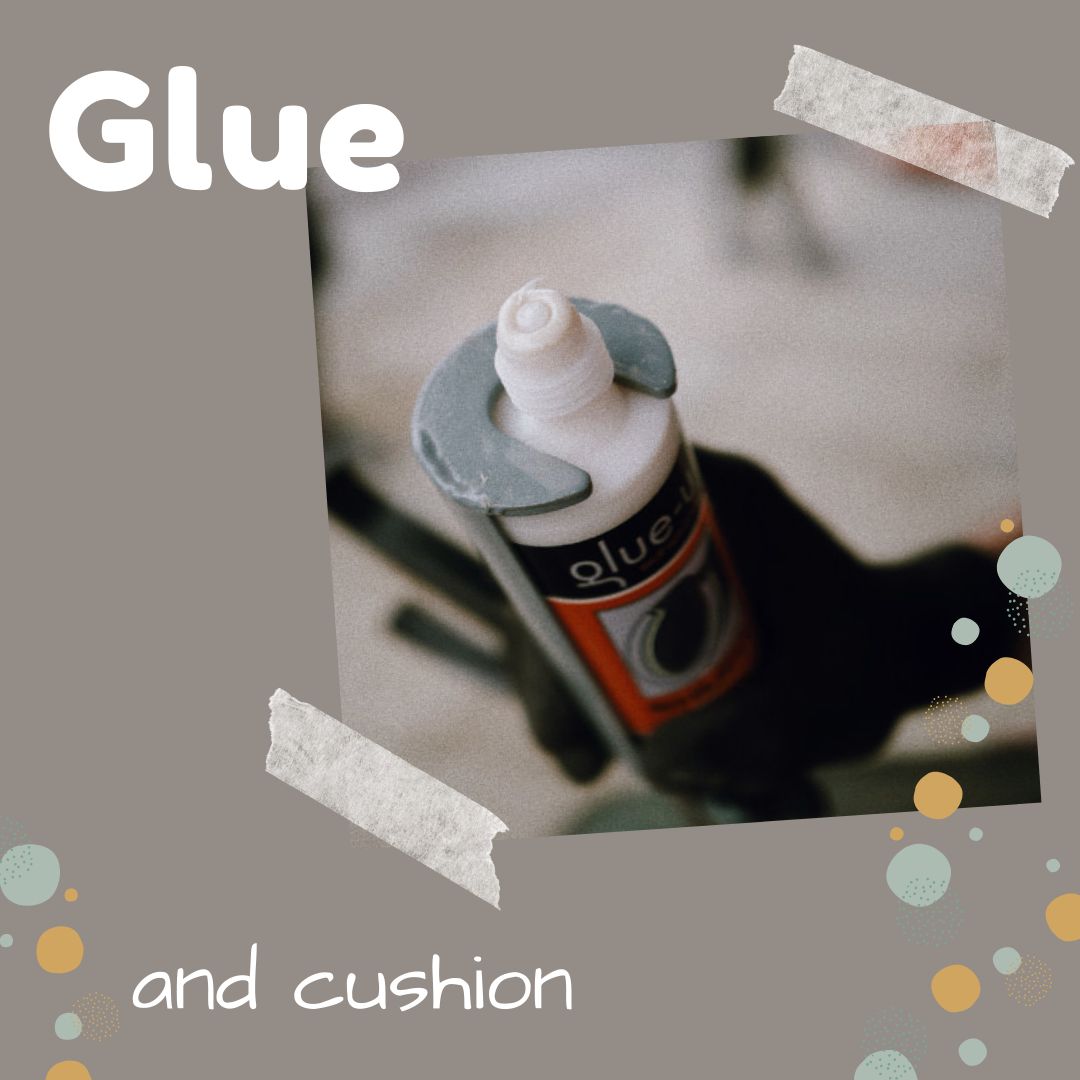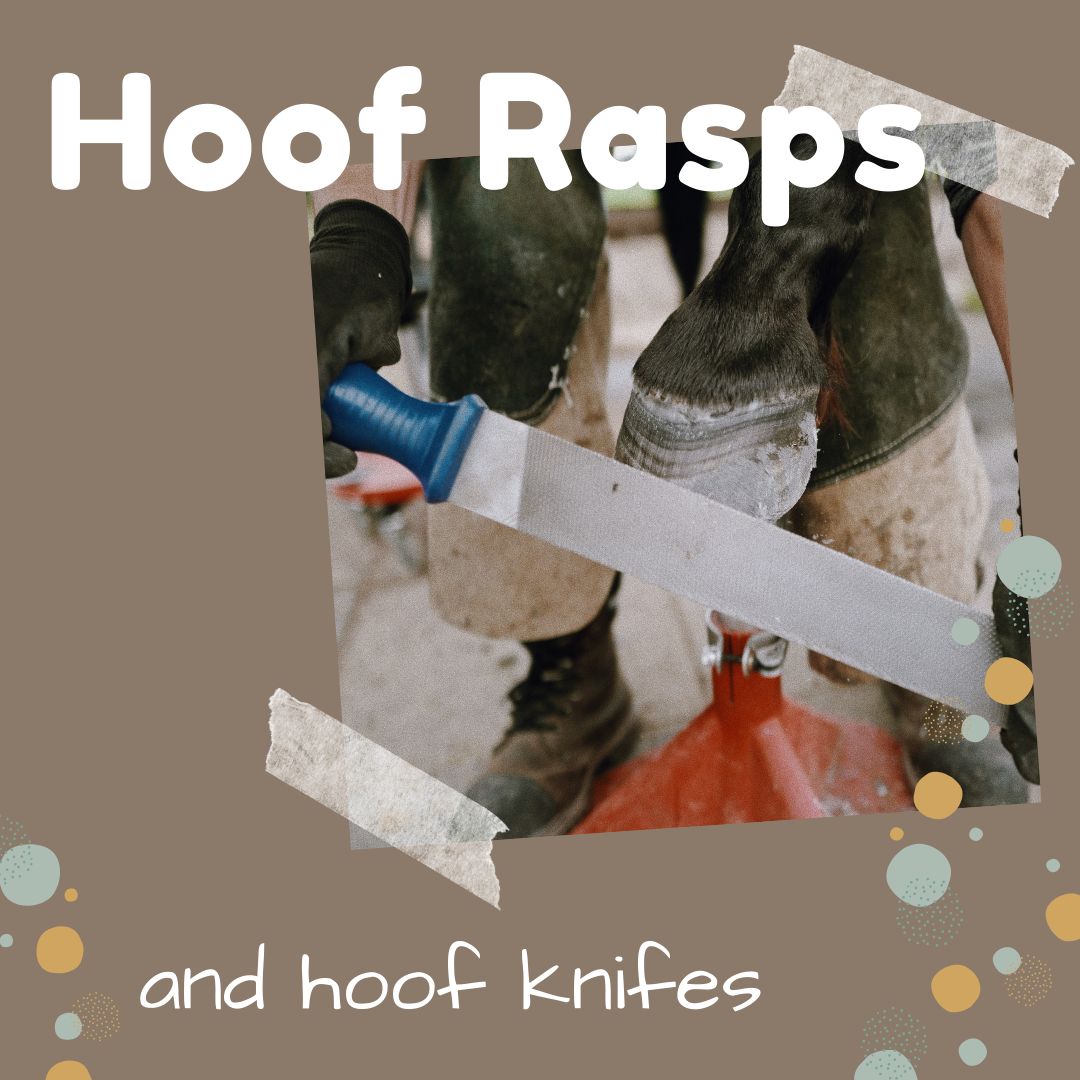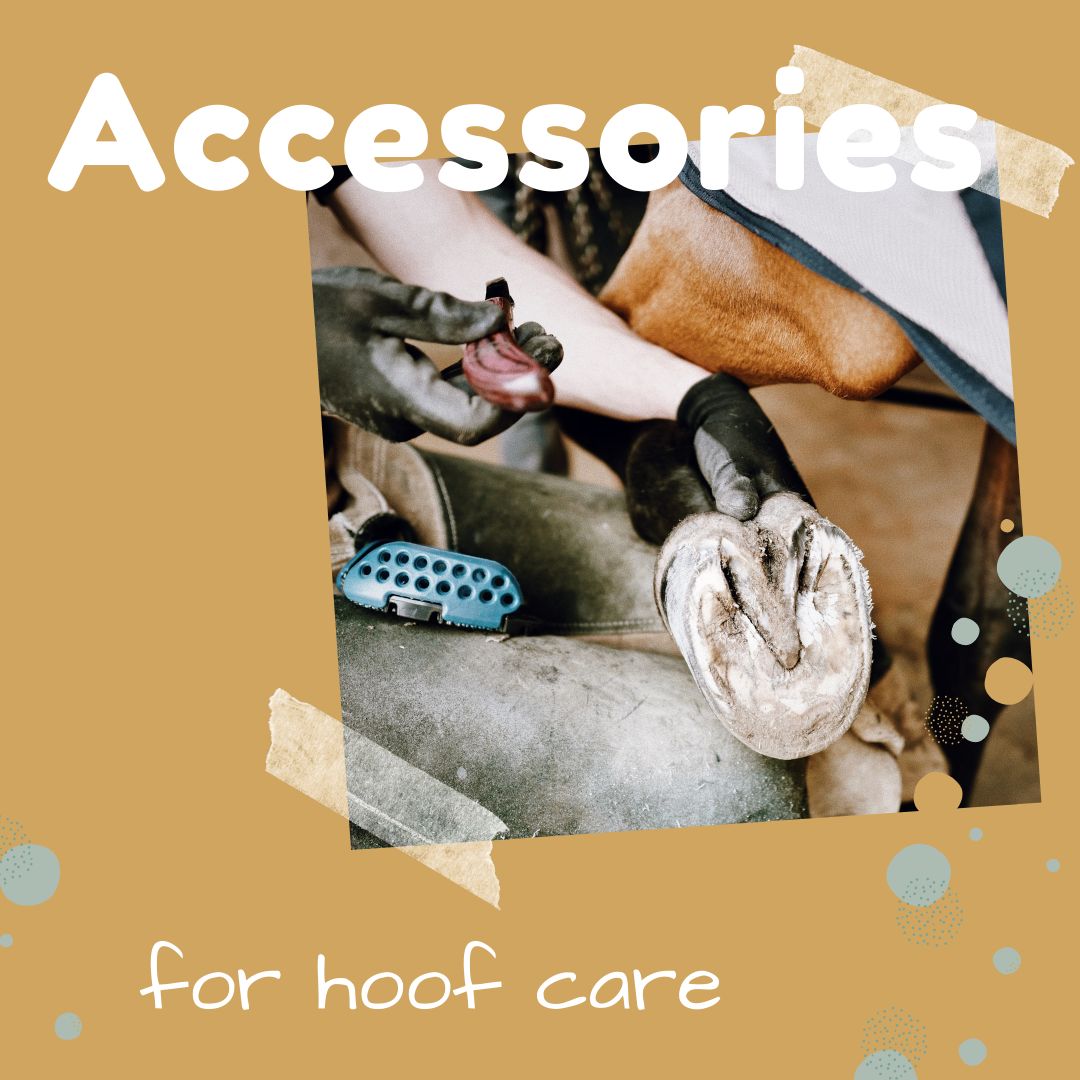19/06/2023
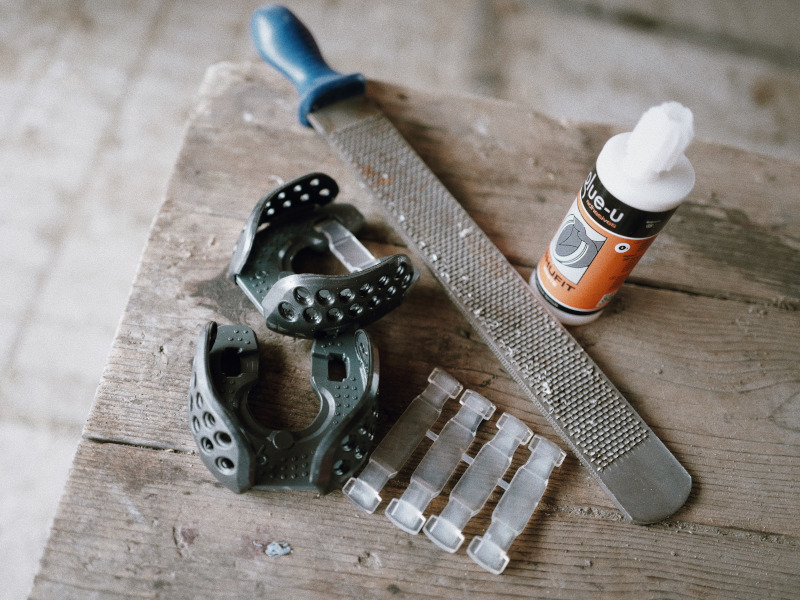
Why does the glue come off again?
When you invest money in an glue on shoe, it is of course very annoying when it comes off the hoof again after only a few days. There can be many reasons for this. We will go on a troubleshooting tour together. Often the difficulties in gluing are already to be found in the preparation of the hoof.
We will take a special look at gluing in summer. There are other things to consider here than in winter.
Where was the horse glued?
Choosing the right location can also be crucial. If you decide on a location outside the horse stable, you should make sure that it is dry, clean and firm (paved or asphalted). If the horse stands on sand or earth, there is a high risk that the hoof will become dirty again after treatmen
If the horse is in the outdoors, it can be windy and dusty. The wind causes the hoof to become dusty or dirty again. Especially much dust can be stirred up when standing near a sandy paddock. If in doubt, choose another place or time of day when it is less windy.
Some horse owners also have the idea of sweeping the stable or around the horse. This also raises dust and dirties the hoof. As a general rule, as long as glue is being used, anything that raises dust should be avoid
Please note:
-
Choose clean, firm ground (preferably indoors)
-
Observe wind conditions
-
Do not sweep
-
Do not use sprays on the other hoof (silver spray or similar).
Was the hoof degreased?
Many horse owners and hoof carers are familiar with gluing the horse's hoof with cyanoacrylate glue. In this case, it is absolutely necessary to degrease the hoof. Pure alcohol, isopropanol or brake disc cleaner is used for this purpose.
For the Hoofstar glue on shoe Rally, however, a two-component glue is used. Unlike superglue, it only sticks when both components are evenly mixed in the mixing tip. During mixing, a chemical reaction takes place and the glue heats up briefly. The heating cures the glue.
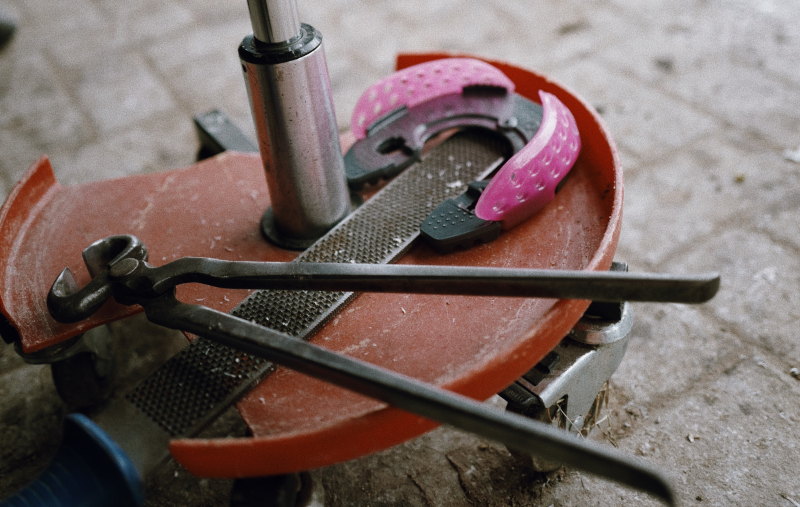
If the hoof is degreased before gluing, it absorbs the degreaser like a sponge. Only after a flash-off time of one to two hours will the degreaser have completely evaporated. The fact that the hoof surface feels dry does not mean that the degreaser has completely evaporated. The chemical reaction (heat) of the glue causes the remaining degreaser to evaporate and escape from the hoof. This prevents the glue from bonding with the hoof. The result is that the glued hoof protection detaches smoothly from the hoof after a few hours or days.
Please note:
-
DO NOT use degreaser
-
Roughen the hoof only
Were the hooves treated with spray (for example silver spray)?
With most horses, only the front hooves are glued. From time to time, however, problems can also occur in the hind hooves. Therefore, horse owners want to treat them with special sprays such as silver spray, since the horse is already tied up and clean.
However, silver spray is very easily transferred through the air and can thus also get onto the other hooves. It has been our experience that the glue can no longer adhere if ANOTHER hoof has been treated with silver spray before or during gluing.
Therefore, please refrain from using any sprays or treaters while the horse's hooves are being taped.
Was the hoof dry?
Actually, this question does not arise at all in summer, as the hooves are usually dry as dust. For hoof treatment, however, it is easier to water the hooves beforehand, as they can then be cut out more easily.
However, the two-component glue only holds on dry hooves or on a dry surface. Therefore, it is important not to water the hooves beforehand. Please also refrain from scrubbing the hooves with a damp brush. If you do, let the hooves dry in peace afterwards.
Please note:
-
Hooves must be dry
-
Do not water hooves
Did the horse stand still while the glue was curing?
There are horses that can stay tied up for a long time without moving. And there are horses that prance and fidget all the time.
When curing the two-component glue on the hoof, the first three to five minutes are crucial. During this time, the horse must stand absolutely still. If the horse moves, microcracks can form in the glue. These micro-cracks cause the glue on shoe to lose stability and the shoe to detach from the hoof more quickly.
If a rather restless or nervous horse is to be glued, it can be helpful to distract the horse with treats or a lick. If in doubt, a second person can hold up one of the hind hooves (if the horse is glued in the front) so that the horse only stands on three legs.
It takes one to two hours for the glue to cure completely. During this time, the horse should not do any cold starts or fast, tight turns in the pasture. If in doubt, leave the horse in the paddock where no big jumps, cold starts or canter jumps are possible.
Please note:
-
The horse has to stand calmly for 5 minutes while the glue is curing
How was the hoof roughened?
There are different ways to roughen a horse's hoof. Either with a rasp, a file or with sandpaper.
Sandpaper can be used to roughen wood or furniture. Since it roughens very finely and is cheap, some customers use it to prepare the hooves of their horses.
However, we strongly advise you not to use it! Sandpaper does not remove the horn from the hoof, as it does not remove any material from the hoof. Instead, it spreads horn, patina and dust on the hoof. Worse still, as the sandpaper also reaches the part of the horse's hoof that was not worked on with the rasp, the roughened area becomes dirty again.
To prepare the hoof for glue on shoeing with two-component glue, a hoof rasp should always be used. Hoof rasps have a coarse and a fine side. The coarse side is used to shorten the hoof and remove material. The fine side, also called the finish side, is used to shape the hoof.
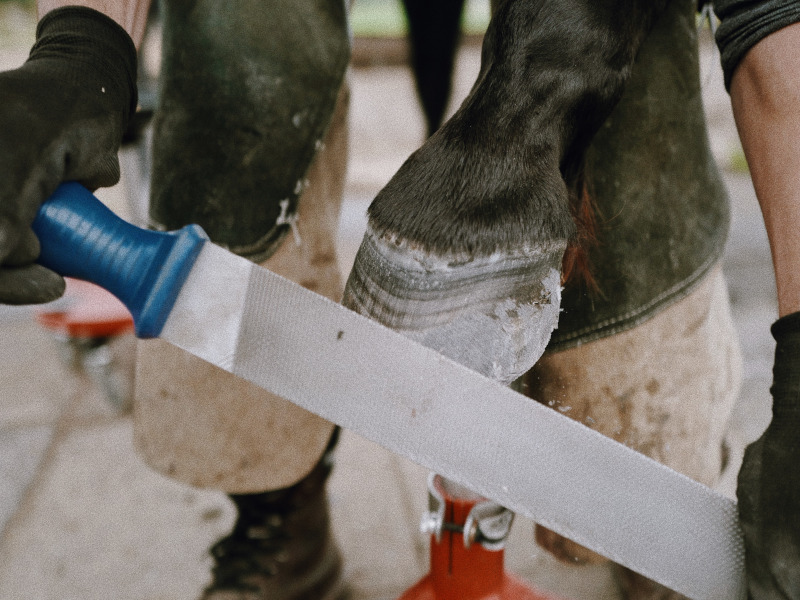
To roughen the gluing surface, the fine side of the rasp must be used. This is because the hoof should only be roughened, but not much material should be taken away from the hoof in the process.
Recommendation:
-
Use oil-free hoof rasp (fine side).
-
Do not use sandpaper
Were the hooves touched again after roughing?
As already mentioned, it is very important to work cleanly and neatly when applying a two-component glue. In order for the glue to adhere well to the hoof, the glue must be applied to freshly roughened hoof horn. Only freshly roughened hoof horn is free of oil and grease.
After buffing, however, care must be taken not to touch and soil the freshly buffed area again. It often happens that out of reflex you reach your hand to the hoof and touch exactly the spot that has just been roughened. This also happens to professionals in seminars and workshops with hoof workers, because during certain movements one does not even think about what one is doing.
Horse fur is always greasy in some form. We touch the horse with our hands during hoof care, but also with our apron or trousers. This means that our hands, gloves and trousers also become greasy.
If you touch the freshly roughened area of the hoof again with your gloves or clothing, the glue will have a harder time sticking to it.
Do not use a cloth or brush to remove excess dust or lint. This will also bring dirt back onto the rough hoof.
It is essential to pay attention to this:
-
Do NOT touch the freshly roughened hoof again!
-
Do not touch the hoof again with a brush or cloth.
Our conclusion
The proper and clean preparation of the horse's hoof is of decisive importance for the permanent and secure attachment of the Hoofstar adhesive shoe. If you know the possible sources of error and take appropriate measures, you can avoid many problems. A clean and firm surface, the avoidance of degreasers and sprays, dry hooves, quiet standing of the horse while the adhesive is setting and the correct roughening of the hoof are essential steps to ensure good durability of the adhesive shoe.
It is also important not to touch or soil the freshly roughened area to be glued again. By carefully preparing and following these tips, you minimise the risk of premature removal of the adhesive shoe and at the same time improve its durability and functionality from the Hoofstar Rally.


